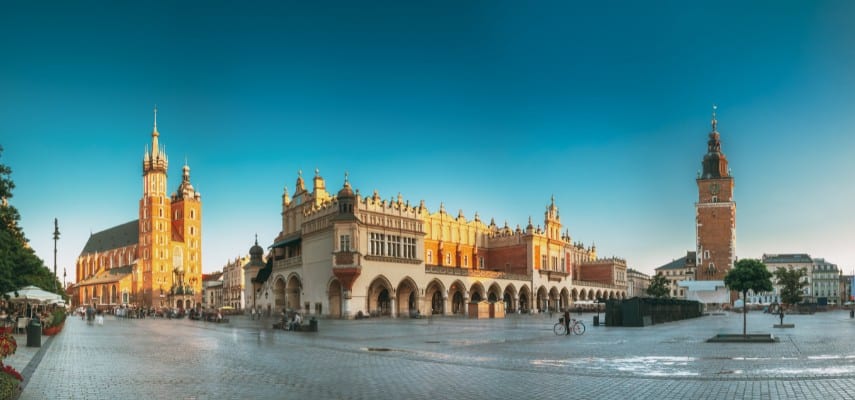
Dublin, the vibrant capital of Ireland, beckons with its rich history, captivating literary heritage, and a pub culture that’s as warm and inviting as a peat fire. While the allure of the Emerald Isle might conjure images of fairytale castles and rolling green hills, a city break in Dublin can be surprisingly accessible, especially if you know where to look for those coveted cheap flights. This comprehensive guide will equip you with the knowledge to snag affordable airfare, explore Dublin’s iconic landmarks, delve into its fascinating past, and navigate its charming streets without breaking the bank.
Snagging Those Elusive Cheap Flights to Dublin
The key to unlocking affordable travel to Dublin lies in strategic planning and flexibility. Airlines are constantly adjusting prices based on demand, so a little foresight can go a long way.

Related Articles about The Emerald Isle on a Budget: Unlocking Cheap Flights and Dublin’s Enduring Charm:
- Johannesburg: A City of Gold, Grit, and Growth – Your Comprehensive Travel Guide
- Chiang Mai: A Traveler’s Guide to Northern Thailand’s Rose
- The Ever-Shifting Sands of Spectacle: Your Ultimate Guide to Las Vegas
- Chasing the Northern Lights on a Budget: Your Guide to Cheap Flights and an Unforgettable Trip to Norway
- Slovakia: A Tapestry of Castles, Caves, and Culture
- Book in Advance (But Not Too Far): While booking months ahead can sometimes yield the best deals, aiming for 2-4 months before your desired travel date is often the sweet spot. Last-minute deals can exist, but they are less predictable.
- Be Flexible with Dates and Times: This is perhaps the most crucial tip. If your travel dates are not set in stone, play around with different days of the week and even weeks within a month. Mid-week flights (Tuesdays and Wednesdays) are generally cheaper than weekend departures. Early morning or late-night flights can also offer significant savings.
- Consider Off-Season Travel: Dublin’s peak tourist season generally runs from June to August, coinciding with warmer weather and longer daylight hours. For cheaper flights and fewer crowds, consider visiting during the shoulder seasons: April to May or September to October. Even the winter months (November to February) can offer incredibly low fares, though you’ll need to pack accordingly for cooler, wetter weather.
- Utilize Flight Comparison Websites: Websites like Skyscanner, Google Flights, Kayak, and Momondo are your best friends. They scour hundreds of airlines and travel agencies to present you with the widest range of options and prices. Set up price alerts for your desired routes to be notified when fares drop.
- Fly Mid-Week and Avoid Holidays: As mentioned, mid-week travel is your ally. Similarly, steer clear of major holidays and school breaks, as demand and prices skyrocket during these periods.
- Explore Nearby Airports: While Dublin Airport (DUB) is the primary gateway, consider if flying into a smaller airport in Ireland or even the UK and taking a budget ferry or bus to Dublin is a viable and cheaper option. This is more niche, but worth investigating for extreme budget travelers.
- Sign Up for Airline Newsletters and Loyalty Programs: Airlines often announce flash sales and special offers to their subscribers. Joining loyalty programs can also earn you points that can be redeemed for flights or upgrades.
- Clear Your Cookies and Browse Incognito: While the impact of this is debated, some believe that airlines track your browsing history and may increase prices if you repeatedly search for the same flight. Using incognito mode or clearing your browser cookies can sometimes help.

Dublin’s Enduring Attractions: A Tapestry of History and Culture
Once you’ve secured your affordable flight, Dublin opens up a world of captivating experiences. The city boasts a remarkable blend of historical significance and modern vibrancy.
- Trinity College and the Book of Kells: A must-visit, Trinity College is Ireland’s oldest university and a stunning architectural gem. The highlight for many is the Old Library, home to the breathtaking Book of Kells, an illuminated manuscript created by monks around 800 AD. The Long Room, a magnificent library with soaring ceilings and thousands of ancient volumes, is an experience in itself.
- Dublin Castle: Steeped in centuries of history, Dublin Castle has served as a Viking settlement, a royal residence, and the seat of British power in Ireland. Explore its State Apartments, medieval Undercroft, and the beautiful Chester Beatty Library, housing a diverse collection of manuscripts, prints, and artifacts.
- St. Patrick’s Cathedral: The largest church in Ireland and the national cathedral of the Church of Ireland, St. Patrick’s boasts impressive Gothic architecture and a rich history dating back to 1191. It’s also famously associated with Jonathan Swift, the author of “Gulliver’s Travels,” who served as its dean.
- Christ Church Cathedral: The older of Dublin’s two medieval cathedrals, Christ Church offers a fascinating glimpse into the city’s past. Its crypt, one of the largest in Britain and Ireland, is an atmospheric space filled with ancient tombs and artifacts.
- Guinness Storehouse: No trip to Dublin is complete without a visit to the iconic Guinness Storehouse. This immersive experience takes you through the history of Ireland’s most famous stout, from its ingredients to the brewing process. The tour culminates in the Gravity Bar, offering panoramic views of Dublin while you enjoy a perfectly poured pint.
- Temple Bar: While often perceived as a tourist trap, Temple Bar is still worth a stroll for its lively atmosphere, cobblestone streets, and abundance of traditional pubs. It’s a great place to soak in the city’s musical heritage, with live traditional Irish music sessions happening nightly.
- Kilmainham Gaol: This former prison holds a significant place in Irish history, having witnessed the incarceration and execution of many leaders of Irish rebellions. A guided tour of Kilmainham Gaol is a poignant and powerful experience that offers a deep understanding of Ireland’s struggle for independence.
- National Museum of Ireland: Dublin is home to several branches of the National Museum, each offering a unique perspective on Irish heritage. The Archaeology branch is renowned for its prehistoric gold artifacts and Viking treasures, while the Natural History museum, affectionately known as the “Dead Zoo,” houses an impressive collection of taxidermied animals.
- Grafton Street: For a taste of Dublin’s modern shopping and entertainment scene, head to Grafton Street. This bustling pedestrian thoroughfare is lined with shops, cafes, and street performers, offering a vibrant and engaging atmosphere.
A Glimpse into Dublin’s Rich History
Dublin’s story is a captivating saga of settlement, conquest, and resilience. Founded by the Vikings as a port in the 9th century, it later became the center of Norman influence and then the seat of English power for centuries. This long and often turbulent history has left an indelible mark on the city’s architecture, culture, and identity.
The Great Famine of the mid-19th century was a pivotal and devastating event, leading to mass emigration and profound social change. In the 20th century, Dublin was at the heart of the struggle for Irish independence, culminating in the Easter Rising of 1916 and the subsequent Irish War of Independence. The city bears witness to these historical events through its memorials, museums, and the very fabric of its streets.
Dublin is also renowned as a UNESCO City of Literature, with a literary heritage that boasts Nobel laureates like W.B. Yeats, Samuel Beckett, and George Bernard Shaw, alongside literary giants like James Joyce, Oscar Wilde, and Bram Stoker. Literary pub crawls and walking tours are a fantastic way to delve into this rich tradition.
Essential Travel Tips for Your Dublin Adventure
To make your budget-friendly trip to Dublin even smoother, consider these practical tips:
- Currency: The currency in the Republic of Ireland is the Euro (€).
- Language: English is spoken universally, and Irish (Gaelic) is the first official language, though less commonly spoken in daily life in Dublin.
- Plugs and Voltage: Ireland uses Type G plugs (three rectangular pins) and operates on a 230V supply voltage and 50Hz frequency. Bring an adapter.
- Tipping: Tipping is not mandatory but is appreciated for good service. A service charge may already be included in restaurant bills. Rounding up the bill or leaving 10% for exceptional service is common.
- Drinking Water: Tap water in Dublin is safe to drink.
- Embrace the Pub Culture: Pubs are more than just places to drink; they are social hubs. Don’t be afraid to strike up conversations with locals, enjoy live music, and savor a pint of Guinness.
- Walking is Key: Dublin is a surprisingly walkable city. Many of its main attractions are within a reasonable distance of each other, allowing you to discover hidden gems and soak in the atmosphere on foot.
- Book in Advance for Popular Attractions: For key attractions like the Guinness Storehouse and the Book of Kells, booking tickets online in advance can save you time and sometimes money.
- Look for Free Activities: Many of Dublin’s museums (like the National Museum branches) offer free admission. Enjoy free walking tours (though tipping the guide is expected), explore parks like St. Stephen’s Green, and simply wander the charming streets.
Accommodation Options on a Budget
Finding affordable accommodation in Dublin is achievable with a little research:
- Hostels: Dublin has a thriving hostel scene, offering dormitory beds and private rooms at competitive prices. They are excellent for solo travelers and those looking to meet other people. Look for hostels in central locations for easy access to attractions.
- Budget Hotels and Guesthouses: Many independent hotels and guesthouses offer clean and comfortable rooms at reasonable rates, especially if booked in advance or outside of peak season.
- Airbnb and Vacation Rentals: Renting a room or an entire apartment through Airbnb can be a cost-effective option, especially for longer stays or for groups. This also provides an opportunity to cook some of your own meals, saving on dining expenses.
- University Dorms (Summer Months): During the summer holidays, some university colleges in Dublin rent out their student dormitories to tourists. These are usually basic but clean and very well-located, offering a unique and affordable stay.
Getting Around Dublin
Dublin offers a good public transportation system, making it easy to navigate the city without a car:
- Walking: As mentioned, Dublin is very walkable. Many of the city’s main attractions are concentrated in the city center.
- Dublin Bus: The city has an extensive bus network that covers most areas. You can purchase tickets onboard (exact change is often required) or use a Leap Card for cheaper fares and easier travel.
- Luas (Tram): The Luas is Dublin’s light rail tram system, with two main lines (Red and Green) that connect various parts of the city. It’s a convenient way to travel between key areas.
- DART (Dublin Area Rapid Transit): This coastal train line runs north and south of Dublin, offering scenic journeys to charming seaside towns like Howth and Dún Laoghaire.
- Taxis and Ride-Sharing: Taxis are readily available, and ride-sharing services also operate in the city. While convenient, they are generally more expensive than public transport.
- Leap Card: This is a smart card that you can top up with credit and use on buses, the Luas, and the DART. It offers significant savings compared to buying single tickets.
The Best Time to Visit Dublin
While Dublin is a captivating destination year-round, the “best” time to visit often depends on your priorities and budget:
- Spring (April-May): This is an excellent time to visit for pleasant weather, fewer crowds, and blooming gardens. Prices for flights and accommodation tend to be more affordable than in the summer.
- Summer (June-August): This is peak tourist season, with the warmest weather and longest daylight hours. Expect larger crowds and higher prices. It’s ideal for outdoor activities and festivals.
- Autumn (September-October): Another fantastic shoulder season, autumn offers crisp air, beautiful fall foliage, and a decrease in tourist numbers. Prices become more reasonable.
- Winter (November-February): For the absolute cheapest flights and accommodation, winter is the time to go. You’ll need to pack warm clothing and be prepared for rain, but the festive atmosphere around Christmas and the cozy pub culture can be incredibly appealing.
Conclusion
Dublin, with its captivating history, vibrant culture, and welcoming spirit, is an accessible and rewarding city break, especially when armed with the knowledge to find cheap flights. By embracing flexibility, utilizing smart booking strategies, and taking advantage of the city’s many free and budget-friendly attractions, you can experience the magic of the Emerald Isle’s capital without straining your wallet. So, start planning, book those flights, and prepare to be enchanted by the enduring charm of Dublin.





